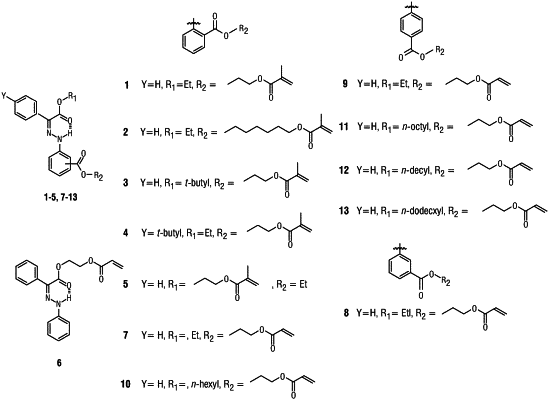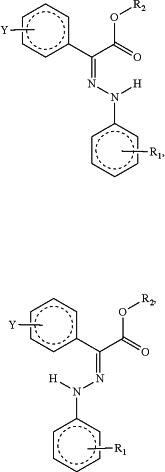| CPC C08F 20/36 (2013.01) [C08F 8/48 (2013.01); C08F 16/28 (2013.01); C08F 18/22 (2013.01); C08F 20/34 (2013.01); C08F 22/22 (2013.01); C08F 220/30 (2013.01); C08F 220/34 (2013.01); C08F 220/36 (2013.01); C08F 222/22 (2013.01); C08F 20/60 (2013.01); C08F 120/34 (2013.01); C08F 120/36 (2013.01); C08F 120/60 (2013.01); C08F 122/16 (2013.01); C08F 122/22 (2013.01); C08F 212/26 (2020.02); C08F 218/22 (2020.02); C08F 222/225 (2020.02)] | 18 Claims |

|
1. A method of increasing the glass transition temperature (Tg) of a polymer,
wherein the polymer is covalently linked to at least one hydrazone-containing compound,
wherein the hydrazone-containing compound comprises:
 or combinations thereof,
wherein at least one of Y and R1 comprises the polymer,
wherein Y, R1 and R2 are each independently selected from the group consisting of H, alkyl groups, alkenyl groups, alkoxy groups, aryl groups, ketone groups, amine groups, amide groups, carboxyl groups, carboxylic acid groups, ester groups, thiol groups, sulfoxide groups, alcohol groups, alkyne groups, azide groups, CH2CH3, C(CH3), (CH2)5CH3, (CH2)7CH3, (CH2)9CH3, (CH2)11CH3, (CH2)1-20CH3, t-butyl, n- hexyl, n-octyl, n-decyl, n-dodecyl and combinations thereof, and
wherein the method comprises:
applying light to the polymer,
wherein the light increases the glass transition temperature (Tg) of the polymer,
wherein the increase in Tg occurs through photo-isomerization, and
wherein the hydrazone in the hydrazone-containing compound transitions from a Z state to an E state upon photoisomerization.
|